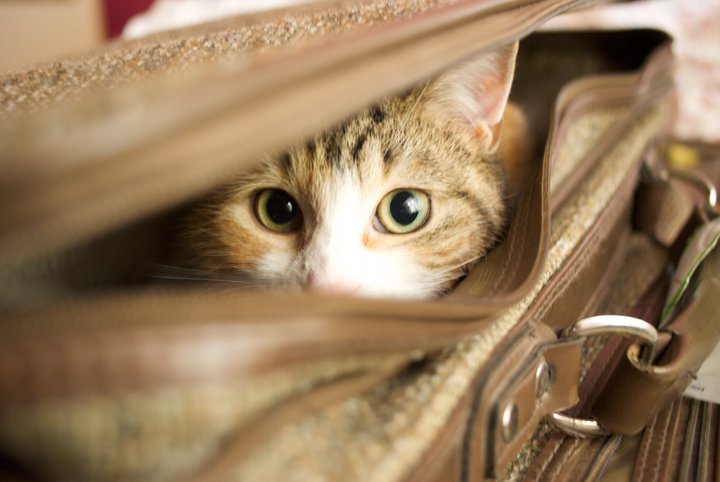
by Dr. Amy | Aug 19, 2015 | Uncategorized
As much as we love our cats, taking them on vacation may not be the best way to express your affection. It’s the rare cat who travels well – they tend to like their own turf and their own routines, and travel upsets both of those things. So, if you plan a short trip, a sitter or visiting cat-lover who cares for your cat at your home, might be the least stressful solution for all concerned. For an extended trip however, or – if your cat has that rare personality that lends itself to travel, here are some pointers to make the journey easier. First, make sure that your cat is examined and up to date on all vaccinations. Next, ask for copies of your cat’s medical records and take them with you on your trip. It might sound unnecessary, but in an emergency you will be glad that you have these when visiting a new veterinarian. And another important thing is to have your vet implant a microchip (painless and safe), and make sure that all of your contact information is recorded with the microchip company. I can’t tell you the number of pets who have scampered away while traveling but were soon reunited with their families because of a microchip. A found animal is scanned with a reader (all vets and shelters have them) and the number on the microchip is used to locate the owner. Long before your vacation date, get your cat used to being in a cat carrier. Leave the carrier out and open, and encourage your cat to go inside to get a...
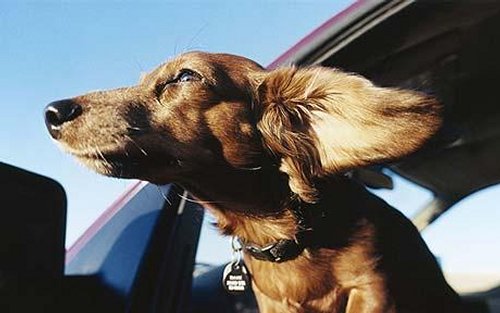
by Dr. Amy | Aug 5, 2015 | Uncategorized
Before you automatically say ‘yes’, think twice about whether your choice of your vacation destination will be as much fun for your dog as it will be for you. If, instead of accompanying you on most of your vacation activities, your dog is confined to a hotel room – complete with strange smells, unusual noises and no one to play with – perhaps this is not the ideal vacation for your dog. On the other hand, if your dog travels well in the car, and if you can choose a destination where your dog is welcome and en-gaged, a drive-to get-away might be just the thing. Here are a few tips to enhance the safety and comfort of the trip. • In advance of the trip, make sure your dog is up to date on all its vaccines and smart flea and tick prevention. • Ask your veterinarian if there are any special medical consid-erations for the particular destination to which you are going. • Make sure to bring a copy of your dog’s medical records and vaccine history. This might sound like a lot effort but it is worth it for your dog’s health since in an emergency the new veterinarian will need this information quickly. Your veterinar-ian’s office can provide this. • Have your vet implant a microchip (painless!), and make sure that all of the information registered to that chip’s number is current and correct. I can’t tell you the number of pets who have scampered away while traveling but were soon reunited with their families because of a simple microchip. A found animal is scanned...

by Dr. Amy | Jun 17, 2015 | Uncategorized
If your dog seems anxious or afraid of fireworks, which is not uncommon, it’s time to start preparing for them now. We now know that many anxious pets can be calmed during thunder or the sound of fireworks by wearing a tight-fitting garment that maintains pressure around the core of the body. The same principle used for centuries to swaddle and comfort infants has been known to help relieve stress and anxiety in both children and adults, and now there is a product designed to help our pets in the same way. Thundershirt (www.ThunderShirt.com) has made a product that is easy to buy and to use, not to mention that it has donated thousands of their products to animal shelters throughout the country. If you are considering the option of a tight ‘comfort garment’, I think it’s best to purchase and use a Thundershirt several weeks in advance of the firework display to let your dog get comfortable wearing the shirt before you are all in the excitement of the moment. Here are some other hints that might help during loud events. Most dogs prefer to be as far from fireworks as possible, so set them up in the quietest room, preferably one without a window — a bathroom or even a closet might work. If they are trained to be comfortable in their crate, it’s a smart idea to get them settled in before the fireworks begin, otherwise a comfy and familiar bed is a good idea. Add a favorite toy or treat. And I recommend stuffing a Kong (www.kongcompany.com) whose open center holds some peanut butter or...
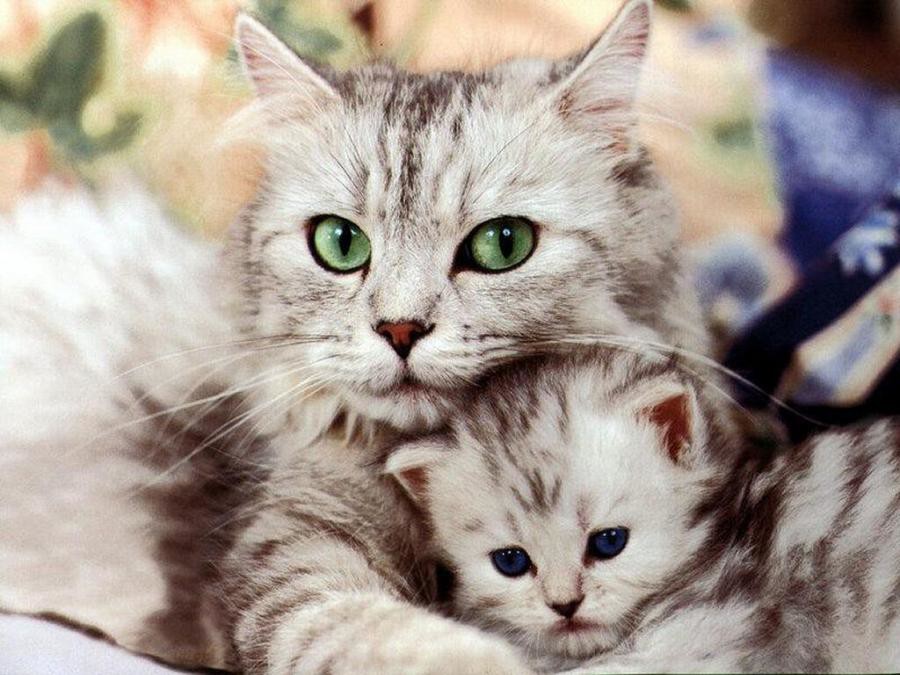
by Dr. Amy | May 4, 2015 | Uncategorized
Maybe, because I care for my patients right in their own homes, it is abundantly clear to me that pet owners view their dogs and cats as true members of their families. In fact, most of my clients identify themselves as their pets’ mothers or fathers; and my messages often reflect that “Oliver’s mom” has called. In our practice we concentrate on all the things we should do for our dogs and cats. But we don’t often register all the things they do for us. From getting us up off the couch to take a walk or smell the flowers, to sticking to schedules of feeding or care, they give our lives purpose and regularity, comfort and love. Not such a different message than that of a holiday designed to remember, with gratitude, being part of a family. With Mother’s and Father’s Days just around the corner, I’d like to suggest that along with our loving human families, we celebrate these holidays by also highlighting the special relationship that we have with our pets. I’m not necessarily endorsing Hallmark Pet Cards for Mother’s or Father’s Day, but I am suggesting that we take a moment on these special days to recognize the marvelous, nurturing part our pets play in our emotional lives. When a tail wags with joy at our company, or we hear the purr of a living being who trusts and loves us, and we look into one another’s eyes and know that we are a team – it is as nurturing and important as anything human I could imagine. Pets are our families and we are...
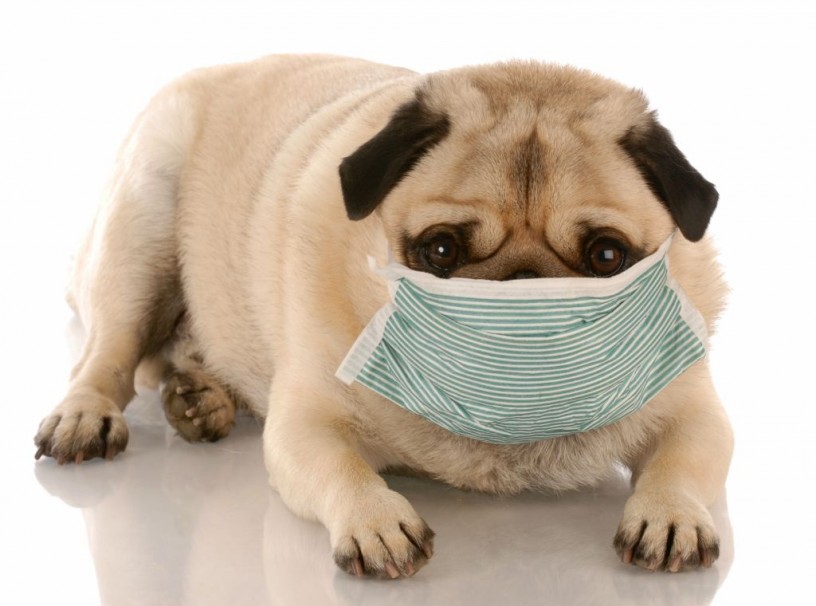
by Dr. Amy | May 1, 2015 | Uncategorized
As you have already heard a large outbreak of a new canine influenza (dog flu) occurred in Chicago last month and more than 1,000 dogs were sick with respiratory symptoms. The disease is highly contagious since it is new, dogs do not have any immunity for this novel virus. Infected dogs have runny eyes and noses, coughing, sneezing, loss of appetite and fever. There is no definitive treatment but infected dogs are helped by supportive veterinary care such as intravenous fluids and antibiotics. Many dogs became seriously ill from secondary pneumonia and a number of dogs have died despite treatment. Sick dogs were tested for H3N8, the previously identified dog flu and they were found to be negative. H3N8 was first identified in 2004 as a flu virus that mutated from a horse flu to a dog flu in Florida and then spread to many other states. There is an effective vaccine for the H3N8 virus currently available for dogs. The current midwestern outbreak is a new strain of influenza virus called H3N2 which is mutated from an avian flu from Asia. It is not yet known if the existing canine flu vaccine has any efficacy for the new virus. As of April 20, 2015 there are no reported cases of the new flu in New York State. Canine flu is transmitted by aerosolized droplets which can be spread from direct contact from dog to dog and the virus is also viable on surfaces where infected dogs have been and on hands and clothing. It is easily killed by disinfectants. There is no evidence that this virus can affect...
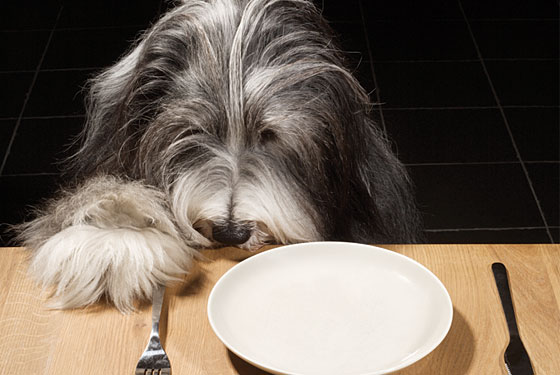
by Dr. Amy | May 1, 2015 | Uncategorized
The answer is likely to be, yes. But around this answer we usually see that along with their age, our pets’ lifestyles have changed. Just as in human behavior, there are things you can do to stave off some of the challenges of aging, and some of this is very specifically related to food. Additionally, there are conditions and diseases that affect aging cats and dogs; and in these, we can see some ways that changing foods, changing habits around eating, or adding supplements might help. First and foremost, and equally important in both cats and dogs, is the matter of weight. Obesity in pets can cause all manner of problems – from joint pain and difficulty in movement (which can become its own spiral of inactivity) to constipation, and the more serious diabetes, kidney, liver or heart diseases. You are in great control here, as you feed and exercise your pets. So their health is very much in your hands. Keep their weight down with a program of exercise and reduced portions of just the right foods and you will buy your pet years of health and comfort. While there is no evidence that changing the formula of your cat’s food is beneficial to their basic aging challenges, portion control is essential if your cat has moved into a more comfy lifestyle. Keep his calories down and his energy up. Make sure that exercise is part of your daily commitment to your pets. Dogs, of course, can and must walk and run and fetch and play, but we often forget that cats, especially indoor CityPet cats, need exercise...








Recent Comments